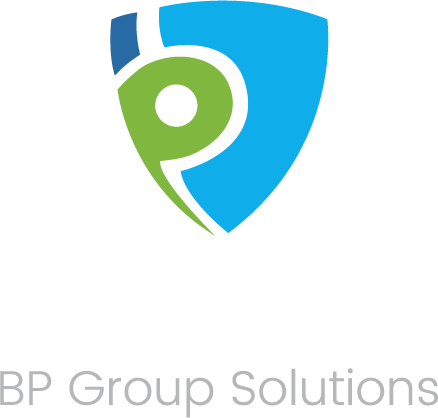Building Business Financial Resilience: A Complete Guide
Building Business Financial Resilience: A Complete Guide

In today’s fast-paced business landscape, financial resilience is not a luxury; it’s a necessity. Economic downturns are a fact of life, and no industry is entirely immune. While these downturns can be daunting, small businesses that have built robust financial resilience can not only survive but thrive.
For small businesses, navigating through economic downturns, industry innovations, and unexpected challenges can be tough. In this article, we delve into the key strategies to bolster your business’s financial resilience.
Understanding Financial Resilience

Let’s start by understanding the definition of financial resilience, Financial resilience refers to a business’s ability to withstand and adapt to financial challenges. It’s the strength a business possesses to bounce back from unforeseen economic shifts. Being financially resilient doesn’t mean a business won’t experience difficulties, but it does ensure they’re better equipped to handle them when they arise.
There are many strategies, policies and changes that you can start implementing today, to create more financial resilience. We’ll cover that in the next section.
Strategies for Building Financial Resilience

Diversified Income Streams
Relying on a single source of revenue can be risky. One of the best means of building financial resilience is diversifying your income & revenue streams. Think about expanding to different customer segments, regions, or even considering ancillary products or services.
Do This By:
- Analyzing Market Trends: Stay informed about emerging market needs and adjust your offerings accordingly.
For instance, a physical bookstore noticing the trend towards audiobooks might consider introducing audiobook memberships to their portfolio. - Expanding Geographically: Consider branching out to other regions or even going global, if feasible.
Example: A handmade jewelry brand that’s popular in its local region might consider leveraging platforms like Etsy to reach an international audience.
- Leveraging Partnerships, Affiliates & Referral Contracts: Collaborate with complementary businesses to create bundled offerings or co-promotion opportunities. There may also be an opportunity to create additional revenue streams with businesses that you normally would refer to without recognition, it’s time to consider seeing if you can partner up and earn some affiliate revenue.
Example: A coffee shop might partner with a local bakery to offer combo deals, enhancing the appeal to customers.
- Expand Product / Service Offering: Consider looking over related / similar products that may make for easy upsells or products on their own.
Example: A roofing company could offer gutter cleaning or gutter guard installation. Winter time is typically a slow season for a roofing company, they could consider Christmas light installations and removals.
Prudent Financial Management

Regularly review finances. Use tools like monthly cash flow forecasts to anticipate future income and expenses.
Do This By:
- Establishing Financial KPIs: Identify key performance indicators relevant to your business’s financial health.
For example, a subscription-based service might monitor monthly recurring revenue (MRR) and customer churn rate closely. - Automating Financial Reports: Use software like Xero or QuickBooks to automate income statements, balance sheets, and cash flow statements. These platforms offer real-time insights, helping businesses make informed decisions without manual data crunching.
- Engaging in Regular Financial Audits: Even with automation, ensure periodic manual reviews to identify discrepancies or areas of improvement. Remember, it’s not just the P&L sheet or bank account balance you need to look over.
Year-end reviews can highlight unexpected expenditure patterns, helping to refine budgeting for the subsequent year.
Digital Integration

The digital shift isn’t just a trend. Businesses with strong digital integration see benefits in revenue growth and operational efficiency.
Do This By:
- Customer Relationship Manager (CRM): One of the best tools in business for managing your client journeys and turning complete strangers into raving fans. CRMs help manage your client relationships, deliver lead magnets, drive brand awareness and engagement, help increase revenue, help you get new Google reviews and ensure that nobody, both prospects and clients, falls thru the cracks.
- Optimizing Digital Platforms: Ensure your website and e-commerce platforms are user-friendly and mobile-optimized.
With an increasing number of users shopping via mobile, a responsive website can significantly improve sales conversions. - Leveraging Cloud Solutions: Tools like Google Workspace, Microsoft Office 365 or Dropbox can streamline operations and enhance team collaboration.
Storing documents in the cloud ensures they’re accessible anytime, anywhere, and by anyone authorized, facilitating smoother business operations. - Staying Updated on Digital Innovations: Regularly explore new tools and platforms that can offer a competitive edge and help drive cost savings.
For instance, integrating AI chatbots can significantly improve customer service by providing instant responses to customer queries.
Employee Retention with Benefits

Attractive employee benefits can be a game-changer. With many Canadian workers citing benefits as a key factor in job satisfaction, it’s a critical area to consider for retention and stability.
Do This By:
- Conducting Employee Surveys: Understand what benefits are most valued by your staff.
Periodic feedback can highlight desired benefits, whether it’s health benefits, flexible hours, or continuous learning opportunities. - Benchmarking Against Competitors: Research what similar businesses in your industry are offering. Staying competitive in the benefits landscape can make your business a preferred choice for top talent.
- Promoting Non-Monetary Benefits: Sometimes, it’s not about monetary value. Recognize and promote the intrinsic benefits of working with your company.
This could range from a positive work environment, opportunities for growth, or even the chance to work on impactful projects.
Understand the Unique Nature of Small Business Resilience

Running a lean operation can be an advantage. Without lengthy corporate approval processes, small businesses can pivot quickly to adapt to industry trends and customer demands. However, with this agility comes the challenge of managing finances more closely.
Do This By:
- Maintaining Flexibility in Operations: Adopt a modular approach to business processes, allowing for easy adaptation.
For example, a small restaurant could adjust its menu seasonally or even monthly based on customer feedback and supplier availability. This lean approach allows for swift adaptation to changing market tastes. - Leveraging Technological Solutions: Use digital tools to automate routine tasks, freeing up time for strategic decision-making.
Accounting software can automate invoice processing and financial tracking, reducing manual effort and the possibility of human error. You can also automate key touch points with clients through Client Relationship Managers (CRM) software, freeing up your time and team resources significantly. - Building Strong Relationships with Suppliers and Partners: Being a smaller entity often means you can foster more personal connections, leading to better terms and collaboration opportunities.
For instance, a boutique fashion retailer might collaborate with local artisans for exclusive collections, leveraging shared marketing efforts and unique offerings. - Continuously Educating Yourself: Stay updated with industry trends, financial best practices, and potential risks unique to small businesses.
Regular participation in industry webinars, workshops, or even online courses can equip small business owners with the knowledge to navigate the challenges specific to their size and industry.
Stay Tuned In, Adapt Quickly To Change & Training

Being attuned to the industry can help you shift priorities promptly. Embrace change, as it is the only constant. Ditching the “corporate buy-in” gives you the freedom to take rapid decisions and maintain pace with the evolving landscape.
It’s critical to stay current and have a constant culture of learning with yourself and your team to stay ahead of the curve. Afterall, it’s much better to be a trendsetter, rather than going with the flow or falling behind. Time to get off cruise control and get into the fast lane.
Do This By:
- Conducting Regular Market Analysis: Dive deep into industry trends. Utilize tools like SWOT or PESTLE to continuously evaluate your market position.
Staying updated ensures you’re always a step ahead of your competitors, allowing for timely business model adjustments. - Engaging With Customers: Keep an open dialogue. Platforms like Typeform or SurveyMonkey let you tap directly into consumer sentiment.
An example could be a bakery noticing a growing demand for gluten-free products. By swiftly introducing gluten-free options based on customer feedback, they’re more likely to capture this emerging market segment. - Participating in Networking Events: Whether it’s local business groups or global industry conferences, connecting with peers provides invaluable insights.
Learning from others’ experiences can often help you avoid similar pitfalls or even identify new opportunities. - Monitoring Consumer Behavior Online: Use social listening tools like Brandwatch or Mention to monitor customer discussions related to your industry.
For instance, a tech company can monitor discussions around a new gadget, adjusting their marketing strategies based on real-time feedback.
Establish a Clear Cash Flow Strategy

A well-defined cashflow system is paramount. It’s not just about understanding your daily and monthly expenses but also identifying potential areas to cut back when necessary, both within your business and personally.
Do This By:
- Regularly Reviewing Financial Statements: Ensuring you’re aware of your incoming and outgoing finances prevents nasty surprises. A cafe seeing a consistent dip in sales during a particular month each year might plan accordingly, perhaps by launching a special promotion during that period.
- Automating Invoice Tracking: Use tools like Xero, Invoice Ninja or Due to manage invoices and ensure timely payments. This reduces the manual workload and helps in maintaining a steady cash flow by sending reminders for due payments.
- Implementing Tight Expense Management: Tools like Expensify or Hubdoc can help track and categorize business expenses. By understanding where the money goes, you can identify areas to potentially cut back or allocate more resources to.
Build Your Emergency Fund

Every business should have a reserve, typically three to six months of cash, to cover unexpected hiccups. This cushion can be a lifeline during economic downturns or abrupt disruptions.
Do This By:
- Setting Aside a Fixed Percentage: Every month, allocate a portion of your profits to your emergency fund.
For example, a graphic design agency might set aside 10% of its monthly profit to steadily build its reserve. - Review and Adjust: As your business grows, the amount required for your emergency fund might change. Regularly evaluate and adjust the amount you set aside.
If a boutique started with a $5,000 monthly expense, but a year later the expense grows to $8,000, the emergency fund goal should be adjusted accordingly. - Keep It Liquid: Ensure that your emergency fund is in an easily accessible account. Avoid tying it up in investments that aren’t easily liquidated.
While higher yield accounts might be tempting, the primary purpose of this fund is accessibility during emergencies.
Implement a Solid Protection Plan

The success of small businesses often hinges on the owner’s expertise. Ensuring that you have the right insurance and protection measures in place means that your business can weather storms even when you’re momentarily out of action.
Do This By:
- Identifying Key Risks: Every business is unique. Consider factors like location, industry type, and business model when determining potential threats.
For example, a brick-and-mortar store in a coastal area might prioritize flood insurance, while an online consultancy might emphasize data protection measures. - Regularly Reviewing Insurance Coverage: Don’t set and forget. Make it a habit to annually review your coverage to ensure it aligns with your business’s evolving needs.
A growing e-commerce business might initially only need liability insurance, but as they expand, they might also need coverage for their inventory and warehousing. - Creating a Succession Plan: Determine who will take over in the event of your absence, whether temporary or permanent.
A restaurant owner, for instance, can train a manager or family member to handle key responsibilities during their absence.
Foster Continuous Collaboration with Your Financial Planner

Establish a regular review schedule with your financial planner. This ensures that you’re always aligned with your financial goals, especially when facing new challenges. Regular discussions can provide clarity, maintain discipline, and prevent rash decisions detrimental to your business’s health.
Do This By
- Setting Clear Financial Milestones: Work with your planner to outline tangible, time-bound financial targets.
A boutique might aim to increase their profit margin by 5% in the next quarter, using this as a metric for success. - Utilizing Financial Management Software: Tools like Xero, QuickBooks or FreshBooks can facilitate seamless collaboration with your planner, providing real-time insights.
These platforms allow for easy tracking of revenue streams, expenses, and profit margins, ensuring you and your planner are always on the same page. - Embracing Flexibility: The business landscape is dynamic. Be open to adjusting your financial strategy as new opportunities or challenges arise.
For instance, a local brewery witnessing a surge in craft beer demand might decide to accelerate their expansion plans after discussions with their financial planner.
Prioritize Work-Life Balance

Remember that resilience also extends to your personal well-being. It’s crucial to know when to take a step back and recharge. A refreshed mindset can offer a renewed perspective and innovative solutions during tumultuous times.
Do This By:
- Setting Defined Work Hours: Especially for business owners, it’s easy to blur the lines between work and personal time. Set and adhere to specific business hours to ensure downtime.
A freelancer might decide to strictly work between 9 am and 6 pm, ensuring evenings are reserved for relaxation and family. - Embracing Regular Breaks: Tools like the Pomodoro Technique can help in managing work intervals, ensuring you get regular short breaks to rejuvenate.
This method involves working diligently for 25 minutes and then taking a 5-minute break, repeating the cycle. - Seeking External Perspectives: Sometimes, discussing challenges with peers, mentors, or even friends can provide fresh insights, alleviating stress.
Joining a business mastermind group or even casual meet-ups can be invaluable for personal and business growth.
Document and Delegate

For ongoing resilience, document your business procedures and roles clearly. This ensures smooth transitions, be it during periods of rapid growth or during the sudden departure of a key player.
Do This By:
- Creating Standard Operating Procedures (SOPs): Outline the steps for core business processes. Tools like Process Street can help in documenting these seamlessly.
For example, an e-commerce platform can have an SOP for handling returns and refunds, ensuring consistency and customer satisfaction. - Utilizing Digital Recording Tools: Voice recordings, video sessions, or screen recording software such as Loom, Berrycast, or Zight can be pivotal in creating detailed process guidelines.
A digital marketing agency might record a tutorial on how they conduct keyword research, ensuring any new team member can replicate the process without extensive training. - Establishing a Central Repository: Keep all process documents, recordings, and relevant files in a centralized system, whether it’s a shared drive like Google Drive or a dedicated platform like Trello.
This ensures easy access for all team members, facilitating quicker onboarding and process adherence.
Embrace Collective Learning

Encourage a culture where teams can collaborate and learn from mistakes swiftly. This not only promotes resilience but also fosters a proactive environment where challenges are viewed as learning opportunities.
Do This By:
- Conducting Regular Feedback Sessions: Creating an open forum where team members can share experiences, both successes and failures, can foster a collective growth mindset.
An app development team might hold bi-weekly sessions to discuss user feedback, iterating on features based on collective insights. - Leveraging Learning Platforms: Utilize platforms like Udemy, Coursera, or LinkedIn Learning to constantly upgrade team skills.
A content creation team might enroll in a course on emerging SEO trends, ensuring their strategies are always current. - Celebrating Innovations and Failures Alike: By recognizing both successes and failures, you build a culture where risks are embraced and learning is continuous.
A startup might have a ‘Fail of the Month’ recognition, not to mock, but to highlight valuable lessons derived from missteps.
Insurance: The Unsung Hero in Business Continuity

Contemplating worst-case scenarios isn’t pessimistic; it’s prudent. Here’s a look at a few insurance options to consider:
- Life Insurance & Critical Illness: Protect against the unexpected with these policies that ensure business operations aren’t disrupted by unforeseen personal tragedies.
- Disability Income Protection: Protect the income of key players in your business should they become disabled and unable to work.
- Disability Business Overhead Expense Insurance: This ensures that even if key individuals face disabilities, the business’s overheads are taken care of.
Navigating Downturns with Data: Simple Metrics Tracking and Forecasting
One of the most important things you can do in business is to track metrics, set KPIs and help understand how you can change your business moving forward. Below are a few simple spreadsheets samples you can use for benchmarking.
Monthly Cash Flow Forecast
A monthly cash flow forecast provides a snapshot of the inflow and outflow of cash within a business, allowing owners to anticipate potential cash shortages and make informed financial decisions.
| Month | Projected Revenue | Projected Expenses | Net Cash Flow |
| Jan | $10,000 | $7,500 | $2,500 |
| Feb | $9,500 | $7,200 | $2,300 |
| Mar | $11,000 | $8,000 | $3,000 |
| … | … | … | … |
With this table, a business can anticipate months where expenses might exceed revenue and plan accordingly. You can use this table to mark actuals as well in the month following.
Digital Adoption Benefits & Its Impact
This table compares the performance metrics for businesses that have embraced digital integration against those that haven’t. It demonstrates the tangible benefits of adopting digital solutions in today’s business landscape.
Just as an example:
| Key Performance Indicators (KPIs) | Digitally Integrated Businesses | Non-Digitally Integrated Businesses |
| Average Monthly Revenue | $15,000 | $10,000 |
| Customer Retention Rate | 75% | 60% |
| Operational Efficiency Rate | 85% | 70% |
| Customer Acquisition Cost | $100 | $150 |
Businesses with strong digital integration typically report higher revenues, better customer retention, more efficient operations, and lower customer acquisition costs.
If you factor digital marketing activities for growth, automation for customer retention & acquisition, digital tools to increase your operational efficiency and since you can measure your marketing, you can measure your ROI of your marketing activities and can easily reduce the acquisition costs. These should all play a key role in your decision making process for the types of tools you wish to implement and the manual processes you’ll be replacing. Hey, now with that added time, time to fill it with finding more revenue streams!
Speaking of digital adoption, you may want to consider checking out the Canadian Digital Adoption Program (CDAP) Boost Your Business Technology grant from the Government of Canada, which provides up to $15,000 to help with your digital transformation.
Financial Resilience Checklist
This checklist provides an at-a-glance status update on best practices for financial resilience. It allows businesses to identify areas they’re excelling in and areas that need more attention.
| Financial Resilience Practices | Status |
| Monthly Cash Flow Forecasting | In Place |
| Regular Review with Financial Planner | In Progress |
| Diversified Income Streams | In Place |
| Solid Protection and Insurance Plans | Not Started |
| Emergency Fund Establishment | In Progress |
| Digital Financial Management Tools Adoption | In Place |
With this checklist, a business can prioritize the areas they need to work on to ensure a sound financial base.
Conclusion: How BPGS Can Support You
Economic downturns can be intimidating, but with the right strategies in place, businesses can emerge stronger. From diversifying income streams to ensuring you have the right insurance covers, preparation is key. At BPGS, we support businesses in weaving the safety net they need to tackle challenges head-on.
Building resilience goes beyond just financial strategy. It’s about having the right partners by your side. Discover how BPGS can be that partner, helping your business navigate the unpredictable waves of industry shifts.






